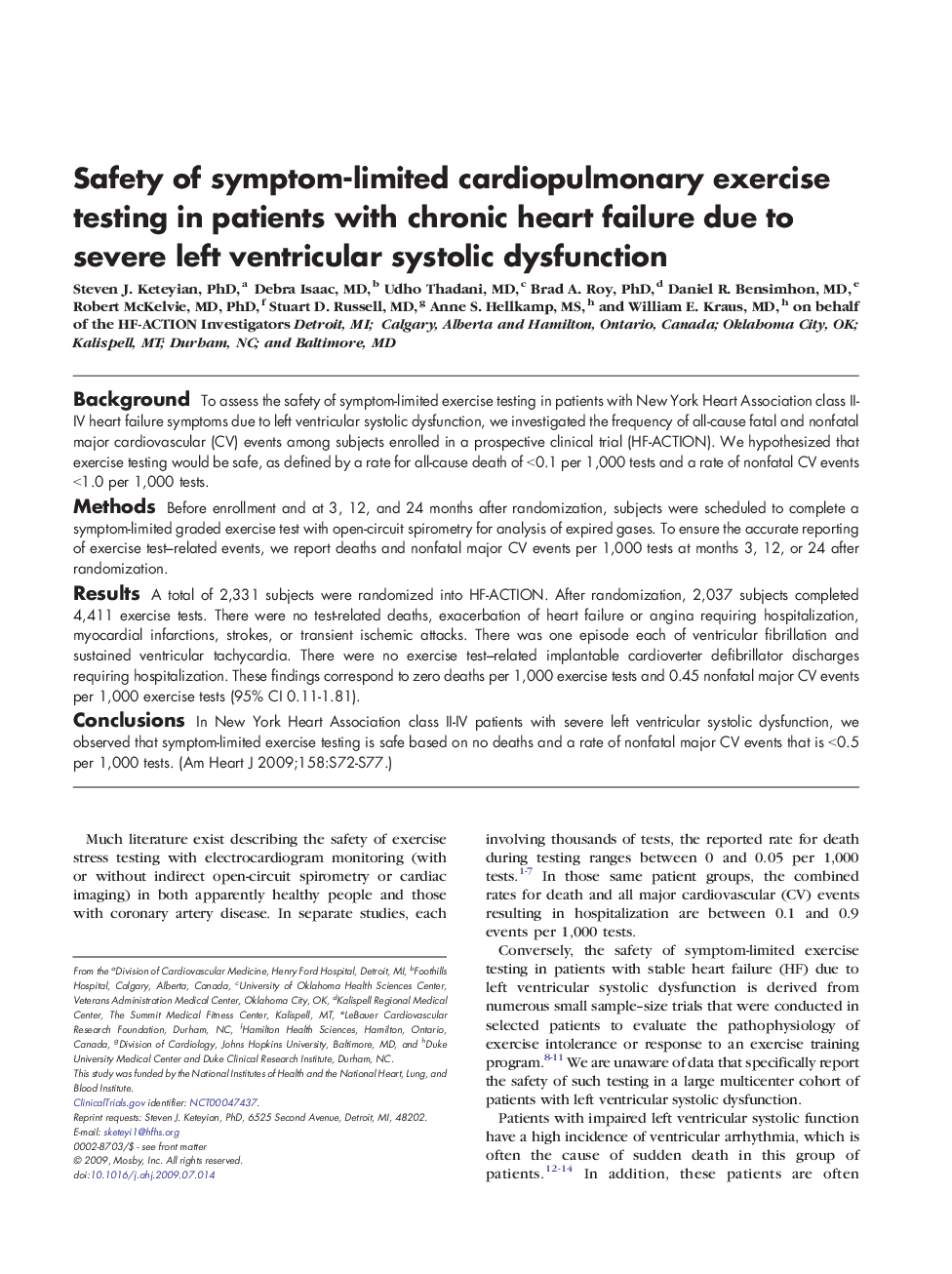| Article ID | Journal | Published Year | Pages | File Type |
|---|---|---|---|---|
| 2850567 | American Heart Journal | 2009 | 6 Pages |
BackgroundTo assess the safety of symptom-limited exercise testing in patients with New York Heart Association class II-IV heart failure symptoms due to left ventricular systolic dysfunction, we investigated the frequency of all-cause fatal and nonfatal major cardiovascular (CV) events among subjects enrolled in a prospective clinical trial (HF-ACTION). We hypothesized that exercise testing would be safe, as defined by a rate for all-cause death of <0.1 per 1,000 tests and a rate of nonfatal CV events <1.0 per 1,000 tests.MethodsBefore enrollment and at 3, 12, and 24 months after randomization, subjects were scheduled to complete a symptom-limited graded exercise test with open-circuit spirometry for analysis of expired gases. To ensure the accurate reporting of exercise test–related events, we report deaths and nonfatal major CV events per 1,000 tests at months 3, 12, or 24 after randomization.ResultsA total of 2,331 subjects were randomized into HF-ACTION. After randomization, 2,037 subjects completed 4,411 exercise tests. There were no test-related deaths, exacerbation of heart failure or angina requiring hospitalization, myocardial infarctions, strokes, or transient ischemic attacks. There was one episode each of ventricular fibrillation and sustained ventricular tachycardia. There were no exercise test–related implantable cardioverter defibrillator discharges requiring hospitalization. These findings correspond to zero deaths per 1,000 exercise tests and 0.45 nonfatal major CV events per 1,000 exercise tests (95% CI 0.11-1.81).ConclusionsIn New York Heart Association class II-IV patients with severe left ventricular systolic dysfunction, we observed that symptom-limited exercise testing is safe based on no deaths and a rate of nonfatal major CV events that is <0.5 per 1,000 tests.
